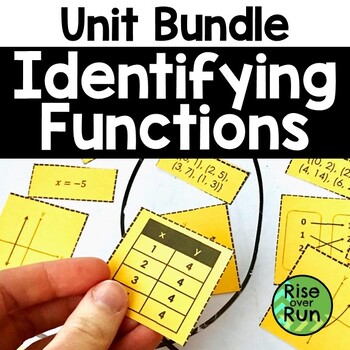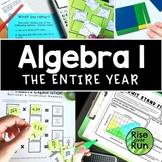Identifying Functions Unit with Activities, Notes, Practice, and Test
- Zip
What educators are saying
Products in this Bundle (4)
Bonus
Also included in
- If you enjoy teaching students using discovery learning and engaging activities with real world connections, this huge pack of resources is here to help you plan your entire year of 8th grade math.Lessons help you teach the standards, encourage discussions, and challenge students to think. StudentsPrice $225.00Original Price $386.46Save $161.46
- Do you love discovery learning, collaboration, hands-on activities, and projects that help students make sense of the math they are learning? This curriculum is packed with engaging and challenging Algebra I and 8th grade math resources for the whole year. A variety of activities, inquiry learningPrice $350.00Original Price $677.94Save $327.94
- This curriculum bundle includes a variety of activities, assessments, games, group activities, projects, inquiry lessons, guided notes, and more for teaching Algebra I CCSS standards. The activities are centered on discovery learning and engaging activities with real world connections. Lessons helpPrice $225.00Original Price $445.21Save $220.21
Description
Need engaging resources to help your 8th graders or Algebra 1 students identify functions? These notes, worksheets, & activities will give students plenty of practice determining whether graphs, equations, mapping diagrams, and tables are functions or not.
Topics include:
- Identifying functions from graphs, tables, mapping diagrams, sets of ordered pairs, and equations
- Determining if relations are linear
- Identifying domain & range
- Function notation
Here's what you get in this bundle:
1. Functions Lesson Pack with Notes & Practice
This jam-packed resource included "cheat sheets" that can be filled in as guided-notes or given to students as a reference. They cover the topics of identifying functions, function notation, and domain & range. Task cards and practice worksheets are included for extra practice.
2. Identifying Functions Practice PowerPoint
This works great as a no-prep formative assessment! With student white boards or a simple thumbs-up/thumbs-down, students can let you know whether they think each relation is a function or not.
This hands-on activity challenges students to look at graphs, mapping diagrams, tables, set of ordered pairs, and equations. They determine if each one is a function and if it's linear. This works great with groups or partners.
4. Self-checking Google Slides for Identifying Functions
Students can quiz themselves and get feedback with this digital activity! After each response, they are shown the correct answer and given feedback if they answer incorrectly.
5. 10-Question Assessment
In the bonus file, you'll find a printable test with 10 questions to see if your students understand functions. Answer key is included.
Check the preview to see more details!








